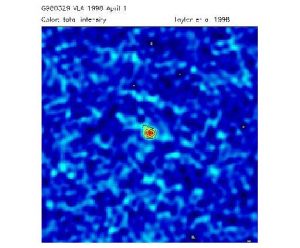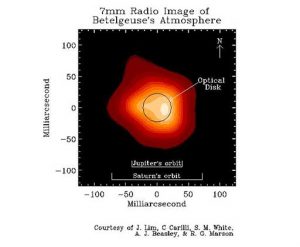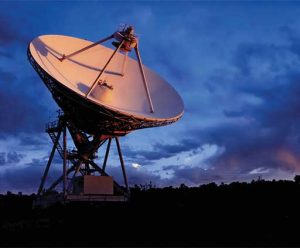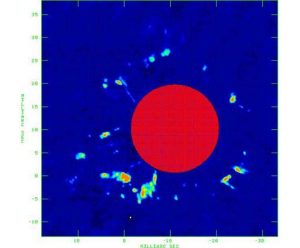Radio telescope studies of the fiery afterglow of a Gamma Ray Burst have provided astronomers with the best clues yet about the origins of these tremendous cosmic cataclysms since their discovery more than 30 years ago.
VLA Shows Boiling in Atmosphere of Betelgeuse
A team of astronomers says that observations with the National Science Foundation’s Very Large Array radio telescope show that a neighboring bloated star has giant convective plumes propelling gas from its surface up into the star’s atmosphere.
Gamma-ray Fireball Measured by Radio Telescopes
A team of astronomers using a pair of National Science Foundation radio telescopes has made the first measurements of the size and expansion of a mysterious, intense fireball resulting from a cosmic gamma ray burst last May.
Bizarre Behavior of Gamma-ray Burster
Radio astronomers revealed that the first gamma-ray burster ever detected at radio wavelengths has surprised them by its erratic behavior.
VLA Sees Magnetic Field on Distant Star
Astronomers at the National Radio Astronomy Observatory have used the continent-wide Very Long Baseline Array to map for the first time the magnetic field on the surface of a star other than the Sun.
Very Large Array Detects Radio Emission from Gamma-ray Burst
Astronomers have used the National Science Foundation’s Very Large Array radio telescope to make the first detection of radio emission from a cosmic gamma-ray burst.










